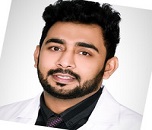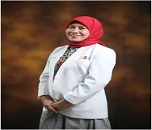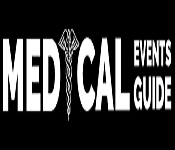About Conference
As a representative of Otology, Rhinology and Laryngology, we are delighted to welcome you to the conference scheduled on March 22-23, 2022 as Webinar which is a marvellous assembly for the worldwide distinguished experts in the field of Medical Science where Administrators, Scientists, Professors, Researchers, Students and Delegates are about to share their research work and accepting newly emerging developments in the conference areas.
Otorhinolaryngology 2022 is an International platform to study about the timely detection as well as dealing based on Professional standards, and enormous research to complete precautions for whole ENT Health issues. The conference contains significant international experts in Medical Health Specialists, Researchers and General practitioners, Students, Delegates and Professors from all over the world to our Conference with the theme “Explore and Emphasize New Technological Innovations in ENT’’. Conference will be promoting Oral presentations, Poster presentations, Keynote discussions, Workshops and many more.
The conference will concentrate on Otology, Rhinology, Laryngology, Facial Plastic and Reconstructive Surgery, Rhinitis, Pediatric Otorhinolaryngology, Audiology and Speech Surgery, ENT Surgery, Sinusitis, Clinical Otorhinolaryngology, General ENT, Cochlear implantation, Laryngology Speech language pathology, Otolaryngology Fungal infections, ENT Infectious diseases, Sleep Apnea disorders.
Scope and Importance:
Otorhinolaryngology 2022 is a surgical subspecialty within medicine that deals with conditions of the Ear, Nose &Throat (ENT) and related structures of the head and neck, mouth, sinuses and larynx. This results in the use of advanced laser and radio frequency technology through surgical and diagnostic procedures and is obvious to drive ENT device rapidly in coming speculate periods. This conference is to provide a platform to academicians and practitioners from various disciplines to discuss and uses of some of the electric systems is partially caused by growing attractiveness of access control systems which take less time for diagnosis, treatment and fewer damages through the time of surgery with minute plan.
Who can attend?
Otorhinolaryngology 2022 brings together individuals who have an interest and awareness in the field of Otorhinolaryngology. This conference is designed for practicing otorhinolaryngologists – Ear, Nose & Throat surgeons, Nurse practitioners, Physician assistants, Life science investors and other healthcare professionals, Students and Delegates, Young researchers, Facial plastic Surgeons, Oncologists, Researchers.
Why to attend?
otorhinolaryngology 2022 is an International Platform for Medical science conference is gathering up for an exciting and informative conference program including plenary lectures, symposia, workshops on a variety of topics, poster presentations and various programs for participants from all over the world. This conference consists of renowned persons like directors and chair persons as keynote speakers who deliver a valuable speech in otorhinolaryngology field. We invite you to join us at the Otorhinolaryngology 2022; here you will have valuable experience with scholars from all over the world.
Target Audience:
Otorhinolaryngology Physicians | Otorhinolaryngology Surgeons | Otolaryngology Researchers | Otorhinolaryngology Faculty | Scientists | Directors and Chair Person | Health Care Professionals | ENT Devices Designers | Pharmacists | Pharmaceutical Companies | Business Persons| Drug Manufacturing Companies| Physical Therapists | Students & Delegates.
Tracks and Sessions
Track 01 - Otorhinolaryngology
Otorhinolaryngology is the medical field that deals with the diagnosis, treatment and management of ear, nose and throat, as well as head, neck, mouth, sinuses and larynx or voice box infections, abnormalities, and other health problems. Specialists in this field are called otorhinolaryngologists or ENT specialists. Otorhinolaryngologists study both medicine and surgery.
-
Head and Neck Cancer
-
Thyroid Cancer
-
Human Papillomavirus (HPV)
-
Obstructive Sleep Apnea (OSA)
-
Sensorineural Hearing loss
Otology and Neurotology Meetings | Rhinitis Conferences | Audiology and Speech Pathology Congress | Otorhinolaryngology 2022 | ENT Surgery Conferences
Track 02 - Otology and Neurotology
Otology is the medical treatment of the ear and hearing related disorders. It is a branch of head and neck surgery that involves the physiology and pathology of the ear. It covers the hearing and vestibular sensory systems and related structures and functions as well as related disorders, diagnosis and treatment. Otology is a subtype of otolaryngology that focuses on diseases of the ear and connective structures. Otologists are the only medical professionals who deal with disorders of the ear and networking tissues.
Neurotology or Neuro-otology refers to the medical and surgical treatment of neurological.It is a subtype of otolaryngology-head and neck surgery and is closely related to otology and also deals with the fields of neurology and neurosurgery. Otology usually refers to the treatment of middle ear disease and consequently carrier hearing loss, while neurology refers to the treatment of inner ear conditions or hearing and balance disorders. These specialists also work with audiologists and related sensory specialists. Neurotologists are physicians who specialize in otolaryngology and specialize in neurological conditions of the ear and related structures.
Otology and Neurotology physicians treat patients are:
Otorhinolaryngology Conferences | Audiology and Speech Pathology Congress | Ear Disorders, Treatments and Therapies Meetings
Track 03 - Laryngology and Neurolaryngology
Laryngology is a branch of medicine that deals with disorders, diseases and injuries of the larynx, commonly known as the voice box. Laryngology specialists treat disorders of the larynx, including those that affect that voice, swallowing or upper airway.
Neurolaryngology is defined as the main functions of the larynx: airway protection, cough and Valsalva production, and voice delivery. The coordination of these characters are very likely to disrupted by neurological disorders
-
Dysphonia/Hoarseness
-
Hoarseness Evaluation and Treatment
-
Laryngopharyngeal Reflux
-
Tracheostomy
-
Laryngitis
-
Spasmodic dysphonia
-
Salivary gland tumors
-
Vocal cord nodules and polyps
Otorhinolaryngology Conferences | Otology and Neurotology Meetings | Otorhinolaryngology 2022 | Cochlear Implant Congress
Track 04 - Rhinology and Sinus Surgery
Rhinology is study of the medical science dedicated to the structure, physiology and diseases of nose. Experts in this field are called Rhinologists who have unique expertise in the medical and surgical treatment of nasal and sinus disorders.
Sinus surgery is a procedure that is available to ENTs to help patients recover from recurrent sinus symptoms. Sinus surgery allows the doctor to open pathways and improve airflow. Another common cause for surgery is a nasal polyp. Enlarged polyps or clusters of polyps are inflammation of the nasal membrane inside the nose.
Types of Sinus surgery:
-
Septoplasty
-
Turbinate Reduction
-
Functional Rhinoplasty
-
Balloon Sinuplasty
Otorhinolaryngology Conferences | Head, Neck and Oral Oncology Congress | Laryngology and Neurolaryngology Conferences | Sinusitis: Symptoms, Causes & Treatment Meetings.
Track 05 - Pediatric Otorhinolaryngology
Pediatric otolaryngology is the area of ​​medicine that deals with disorders and conditions of the ear, nose and throat (ENT) area and related areas of the baby's head and neck. Pediatric otorhinolaryngology provides comprehensive medical and surgical care for newborns, infants, and adolescents with inherited disorders and infections. Pediatric otorhinolaryngologists usually provide services in the diagnosis and treatment of ear, nose, and throat disorders, as well as head and neck diseases, surgery of the head and neck, pre-and post-operative care, consultation with ear, nose, or other physicians. Sore throats can be diagnosed and help diagnose communication disorders in children.
-
Decannulation
-
Myringotomy and Tubes
-
Ear diseases and Otitis Media
-
Adenoidectomy
-
Cricotracheal Resection
-
Laryngotracheal Reconstruction and Laryngomalacia
-
Velopharyngeal Insuffeiciency
Rhinology and Sinus Surgery Conferences | Facial plastic and reconstructive surgery Congress | Obstructive Sleep apnea (OSA) and Snoring Meetings
Track 06 - Rhinitis
The term rhinitis refers to inflammation of the lining layer of the nose. In fact the nasal mucosa is anatomically continuous with the paranasal sinuses mucosa. So each case of rhinitis is associated with the degree of sinusitis, as well as each case of sinusitis is associated with a variable degree of rhinitis. Hence the term (Rinosinusitis) is commonly used to describe inflammation of the nose and paranasal sinuses. To simplify the subject, however, we use the term when the main injury is in the nose is called as Rhinitis.
Types of Rhinitis:
-
Acute and Chronic Rhinitis
-
Etologic factors in chronic rhinosinusitis
-
Microbiology of rhinosinusitis and antimicrobial resistance
-
Pediatric rhinosinusitis
-
Infectious and Acute rhinosinsitis
-
Innate and adaptive immunity in allergic respiratory inflammation
-
Nasal Lupus Vulgaris
Otorhinolaryngology Conferences | Head, Neck and Oral Oncology Congress | Laryngology and Neurolaryngology Conferences | Sinusitis: Symptoms, Causes & Treatment Meetings | Obstructive Sleep apnea (OSA) and Snoring Meetings
Track 07 - Sinusitis: Symptoms, Causes & Treatment
Sinusitis is an inflammation of the passage and mucoperiosteum lining the nasal sinuses and sinuses that results in nasal congestion, pressure on the nose, eyes and forehead, nasal drainage and more. Normally, the sinuses are filled with air, but when the sinuses become clogged with fluid, germs can grow and cause infection. Conditions that can cause sinus congestion include the common cold, allergic rhinitis, nasal polyps, or abnormal septum. In children, the natural environmental factors that cause sinusitis include allergies, illness from other children in the daycare or school, pacifiers, bottle drinking behind the scenes, and smoke in the atmosphere.
Sinusitis is classified according to the duration of symptoms into acute (less than 4 weeks), substance (between 4-12 weeks) and chronic (more than 12 weeks). Fungal and bacterial rhinosinusitis are caused by microorganisms that affect the nasal membranes. Invincible rhinitis or rhinosinusitis can be treated with vaccines, while hypersensitive rhinitis can be treated with intranasal corticosteroids and antihistamines.
Types of Sinusitis:
-
Viral sinusitis
-
Bacterial sinusitis
-
Allergic sinusitis
-
Chronic sinusitis
-
Sinus headaches
-
Immunodeficiency in chronic sinusitis: Recognition and Treatmet
-
Chronic maxillary sinusitis
-
Pediatric sinusitis
Otology and Neurotology Meetings | Rhinitis Conferences | Audiology and Speech Pathology Congress | Otorhinolaryngology 2022 | ENT Surgery Conferences | Head, Neck and Oral Oncology Conferences
Track 08 - Facial plastic and reconstructive surgery
Facial and plastic surgery is a type of surgical treatment for people who have had congenital and congenital abnormalities on the face and neck. It is a surgical procedure and reconstruction intended to correct dysfunctional areas of the body. It is dedicated to restoring facial and body defects due to congenital disorders, trauma, burns, and diseases. There are many cosmetic surgery options to enhance or change your face and body such as breast enhancement, facial contouring, facial rejuvenation, body shape, skin rejuvenation, and plastic surgery. Techniques ranges from a few abstract techniques to cutting-edge operations, using tissue transplants, micro vascular free tissue transplantation, bone replacement and dynamic facial folds.
-
Otoplasty
-
Injectable cosmetic treatments
-
Rhinoplasty and septoplasty
-
Facelift (Rhytidectomy)
-
Genioplasty
-
Trauma to the face
-
Rhinology surgery
-
Complex Lacerations and soft tissue damage
-
Browlift and Blepharoplasty
Head, Neck and Oral Oncology Conferences | Clinical Otorhinolaryngology Conferences | ENT Surgery Meetings | Otology and Neurotology Conferences | Pediatric Otorhinolaryngology Congress
Track 09 - Cochlear Implant
The cochlear implant (CI) is surgically placed in a neuroprosthesis, which provides treatment for a person with bilateral moderate-to-serve sensorineural impairment with improved voice recognition and improved speech perception in a quiet and noisy environment. The latest cochlear implant is an electronic device whose purpose is to convert environmental sound into electrical impulses that are delivered through a multiple electrode array situated in close presence to the cochlear nerve.
Cochlear implants are the 1st true bionic hearing organs. They have been used experimentally in some people who become deaf in one ear after learning to speak. It is surgically inserted in the inner ear and activated by a device worn behind the ear. Cochlear Implants are not hearing aids.
Benefits:
-
Understand speech without lip-reading
-
Many can make telephone calls
-
Hearing ranges from near normality ability to understand speech to no hearing benefits at all.
-
Some can enjoy music.
Ototoxicity Congress | Facial plastic and reconstructive surgery Conferences | Clinical Otorhinolaryngology Conferences | Sinusitis: Symptoms, Causes & Treatment Meetings
Track 10 - Ototoxicity
Ototoxicity is a side effect of a drug, for example, that is toxic to the cochlea or auditory nerve and sometimes to the vestibular system, especially to the ear. The effects of ototoxicity are reversible and temporary or irreversible and permanent. Ototoxic drugs include antibiotics such as gentamicin, streptomycin and tobramycin, loop diuretics such as furosemide, and platinum-based chemotherapy agents such as cisplatin, carboplatin and vincristine. Many non-steroidal anti-inflammatory drugs (NSAIDs) have also been shown to be ototoxic. This can lead to sensorineural hearing loss, dynamics or both. Some environmental and professional chemicals have also been shown to affect the auditory system and sound.
-
Otomycosis
-
Furunculosis
-
Collaural fistula
-
Erysipelas
Cochlear Implant Conferences | Facial plastic and reconstructive surgery Congress | Clinical Otorhinolaryngology Meetings | Otolaryngic Fungal Infections Conferences
Track 11 - Clinical Otorhinolaryngology
This session covers current surgical procedures, diagnostic tests, imaging detection and all subdivisions of otolaryngology including prosthetics, minimal invasive therapy for aging face, progression in craniofacial surgery, surgical rehabilitation. - Side definition and robotic surgery in head and neck cancer. Clinical Otolaryngology is actively seeking manuscripts on innovations in the diagnosis and management of the inner ear for the 2022 special issue.
Ototoxicity Conferences | Rhinitis Congress | Otolaryngic Fungal Infections Conferences | ENT Surgery Congress
Track 12 - ENT Infectious Diseases
Infectious diseases occur based on the interaction of host capabilities and microbial virality. Ear infections can be external, middle, or inner ear infections. Inner ear infections are less likely because viruses and bacteria are harder to get to this part of the ear. Nasal infections often affect the nasal passages (rhinitis), but they also affect the sinuses (sinusitis). ENT infectious disease deals with certain points that unify parasitic laryngitis in an immunocompromised patient, including tonsillitis in adults and adolescents, typical evidence of gonococcal ear, bacterial and immunological assessments.
-
Bacteriological and Immunological studies related to ear
-
Fungal laryngitis in Immuno
-
Tonsils in adults and children
-
Mucormycosis in immune
-
Antimicrobial resistance profiles of ocular and nasal flora
-
Implications for gonococci detection
Audiology and Speech Pathology Conferences | Head, Neck and Oral Oncology Congress | Obstructive Sleep apnea and Snoring Meetings | Otorhinolaryngology 2022 Conferences
Track 13 - Audiology and Speech Pathology
Audiology is the division of science that studies hearing balance and related disorders. Audiology aims to determine which parts of the hearing (high, middle, or low frequencies) are affected, and at what level and where the lesion causing the hearing loss is initiated (outer ear, middle ear, inner ear, auditory nerve, and/or central Nervous system). Auditory processing disorder (APD) is a set of disorders that affect the way the brain processes auditory information. Insomnia is a common complaint in patients with unbearable dizziness, while restless leg syndrome (RLS) is another important sleep disorder. Sleep apnea has been reported to be closely related to vestibular dysfunction and minor disease.
Basic pathology includes diagnostic and forensic tests to identify the factors that cause otorhinolaryngological diseases. Tuning fork tests and free field voice testing (whisper from 40 cm) Mass tests for ear examination. The nasal passage can be checked by airway conflict and occasional odor. It involves looking into the mouth and pharynx. Examination of the throat involves a complete examination of the oral cavity.
-
Hearing Loss or Impairment
-
Balance disorder
-
Audiometry
-
Bone Anchored Hearing Aid ( BAHA)
-
Auditory Brainstem Response (ABR)
-
Begin Paroxysmal Positional Vertigo (BPPV)
-
Spatial Noise-Induced Hearing loss
-
Tympanometry
-
Otoacoustic Emissions
-
Auditory and Vestibular System
ENT Infectious Diseases Conferences | Otolaryngic Fungal Infections Meetings | ENT Surgery Congress | Otorhinolaryngological Manifestations in Lactating women Conferences
Track 14 - Otolaryngic Fungal Infections
Fungi are plant-like organisms that don’t contain chlorophyll. Most fungi raise in dark, warm, and humid places. When the body’s immune system is suppressed, fungi find a chance to attack the body and many side effects arise. Fungi enter the human body through the ear, oral cavity, and sino-nasal cavity, leading to fungal infections. Fungal infections in the area of otorhinolaryngology often occur with a decrease in immune function and domestic fungi rarely exhibit pathogenicity in infections.
Obstructive Sleep apnea and Snoring Congress | Audiology and Speech Pathology Conferences | Ototoxicity Meetings
Track 15 - Obstructive Sleep apnea and Snoring
Obstructive sleep apnea is a recurrent upper airway obstruction caused by the destruction of the pharyngeal airway during sleep. Although trying to breathe, it is considered to be caused by repetitive breathing during sleep and is usually caused by a decrease in blood oxygen saturation. It is of utmost commonly observed by loud snuffling. Therefore, there may be a nasty or snoring noise while breathing. There are three forms of sleep apnea and they are central (CSA), obstructive (OSA), and a combination of the two. Risk factors for OSA include being overweight, a family condition, antipathies, and enlarged tonsils. In OSA, breathing is disturbed by blockage of airflow, while in CSA breathing discontinues due to a lack of effort to breathe. Sleep apnea is often identified in an overnight sleep study.
Obstructive sleep apnea procedures include uveoplatopharyngoplasty, ulophalatal flap surgery, tonsillectomy and adenoidectomy, genioglossus advances, maxillofacial advances, and other procedures. Snoring and obstructive sleep apnea mask are free of risk factors for problematic ventilation. Endotracheal anesthesia is suitable for OSA surgery as there is a risk of expecting blood from the surgical site.
Some of the ways you can diagnose sleep apnea include the following:
-
Snoring
-
Choking sounds
-
Insomnia
-
Headaches in the morning
-
Memory loss
-
Pauses in breathing
-
Overweight
ENT Surgery Conferences | Otolaryngic Fungal Infections Congress | Head, Neck and Oral Oncology Meetings
Track 16 - ENT Surgery
The term ENT is derived from their area of expertise - ear, nose and throat. It consists of related structures such as the sinus and larynx. Although general practitioners can treat problems that affect these areas, they can only provide medical treatment. ENT specialists are physicians who are trained in both medical and surgical management of such health conditions, hence they are also known as Head and Neck Surgeons.
ENT surgery is often needed to treat conditions that affect the ear, nose, or throat when medications and other non-invasive treatments are ineffective. Otorhinolaryngology or ENT is one of the most diverse medical specialties with various sub-specialties such as laryngology, pediatrics, otology, neurology, implantation ontology, oncology, and rhinology and sinus surgery. Due to the wide range of ENT surgery, ENT surgery may be required to treat many conditions, from the treatment of tonsillitis in children to the treatment of laryngeal cancer in adults. ENT is also used in reconstructive and cosmetic surgeries to correct deformities or injuries.
Types of ENT Surgery:
Otolaryngic Fungal Infections Conferences | Head, Neck and Oral Oncology Congress | Recent Advances & Future Directions in Otorhinolaryngology Conferences
Track 17 - Head, Neck and Oral Oncology
The Department of Otolaryngology-Head and Neck Surgery provides comprehensive treatment and rehabilitation for patients with cancers of the head and neck, they are: Oral cancer (including gums and tongue) Throat cancer, also known as pharynx or pharyngeal cancer. Head and neck disease is associated with persistence of certain natural and malignant factors, such as tobacco smoking, UV light, certain chemicals used as part of a specific work environment, and certain types of infections, for example human papillomavirus. These tumors are very strong in their biological behavior; Patients with these types of diseases are at increased risk of developing another growth in the head and neck area. Most head and neck diseases can be treated if detected early by surgery, although radiation therapy may be considered an urgent part in the same way. Still, chemotherapy is ineffective.
Oral cancer can take place in any part of the mouth. Most oral cancers start in the flat cells that protect the surface of your mouth, tongue, and lips. Anyone can get oral cancer, but the risk is higher if you are a male, tobacco user, heavy drinker, person with HPV, or have a history of head or neck cancer. Everyday sun exposure is also a risk factor for lip cancer.
-
Oral and Craniofacial diseases
-
Prevention of oral cancer
-
Molecular Pathogenesis of Oral cancer
-
Head and Neck surgery
-
Radiation therapy for Head and Neck Oncology
-
Oral and craniofacial diseases
-
Oral surgery
-
Carotid body tumor
-
Hematopoietic Stem cell treatment
-
Squamous cell carcinoma, melanoma and tumor pathology
-
Chemotherapy for Head and Oral Oncology
Otorhinolaryngological Manifestations in Lactating women Conferences | Anatomical and Physiological disorders of Nose and Ear Congress | ENT Surgery Conferences
Track 18 - Otorhinolaryngological Manifestations in Lactating women
There are many physical changes in the body of pregnant women. Otological, rhinological, and laryngological changes are most often seen in pregnancy. Otorhinolaryngological manifestations during pregnancy are mostly benign and reverse in the postpartum period and some do not. These changes in pregnancy are mainly caused by a change in the sex hormones in the female body, which return to normal levels after the end of the gestation period. There should be a clear understanding between otolaryngologists and obstetricians to improve the quality of life of pregnant women by avoiding drugs that control otorhinolaryngological symptoms, especially in the first trimester. It is important for all physicians to have clinical knowledge regarding the manifestations of otorhinolaryngological manifestations and treatment options, with caretaking into account the effects on the mother and fetus during pregnancy.
Recent Advances & Future Directions in Otorhinolaryngology Conferences | Anatomical and Physiological disorders of Nose and Ear Congress | Obstructive Sleep apnea and Snoring Conferences
Track 19 - Recent Advances & Future Directions in Otorhinolaryngology
This session provides a more complete and complex understanding of research methods, especially in the behavioral sciences of otorhinolaryngology. It relies on direct research, ethics exploration and proposes clinical outcomes. At that point it summarizes the findings presented in one of the more important investigations of research behavior, concluding with general insights into the requirements and instructions of ventures to respond to errors and improve efforts to promote higher gauges for reliability in testing.
-
Laryngeal Photography
-
Otoscopic Photography
-
Stroboscopy
-
Fibre Optic Laryngoscopy
-
Oral Leucoplakia And Oral Verrucous Carcinoma
-
Pleomorphic Adenomas
-
Uvulo-Palato-Pharyngoplasty
-
Functional Endoscopic Sinus Surgery (FESS)
-
Laryngo Fissure with Cordectomy
-
Laser in ENT
-
Oral and Oropharyngeal Haemangiomas
Anatomical and Physiological disorders of Nose and Ear Conferences | Head, Neck and Oral Oncology Congress | ENT Surgery Conferences
Track 20 - Anatomical and Physiological disorders of Nose and Ear
Anatomical and Physiological Disorders of Nose causes certain disorders are:
-
Chronic nasal obstruction
-
Nasal polyposis
-
epistaxis and myasis
-
Rhinorrhoea & Rhinolith
-
Septal hematoma
-
Deviated nasal septum
-
Nasal reflexes
-
Post-Nasal drip & Young’s syndrome
-
cleft palate
-
Kartagener’s syndrome
Sinonasal disorders are: Unified Airway diseas, Asthma
Tumors can be surgically treated with functional endoscopic sinus surgery, endoscopic frontal sinusotomy, transanal endoscopic surgery, sinus dilation, and stenting.
Otorhinolaryngology Conferences | Laryngology and Neurolaryngology Congress | Recent Advances & Future Directions in Otorhinolaryngology Conferences


















